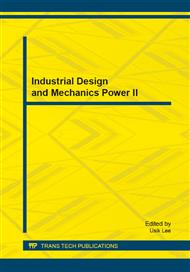p.290
p.296
p.301
p.306
p.313
p.321
p.325
p.331
p.335
Analysis of a New Mechanical Anti-Lock Brake System for Two-Wheeled Vehicles
Abstract:
This study aims to present an analysis on a new type of mechanical anti-lock brake system (ABS) and the device is suitable for two-wheeled vehicles, such as bicycles. Firstly, the structure of the mechanism, the principle of operation and operating stages of the device are discussed. Secondly, the force models of the system and the force equations with parameters are developed. Then, a numerical program for simulating the operation of the system is developed, and the relationship between operating force and braking force, as well as the efficiency of ABS in different situations (e.g. road friction coefficient, loading) are analyzed. Finally, the results of how each parameter affects the braking performance are discussed. In this paper, we present a complete analysis on this new mechanical ABS systematically. Through the simulation of various operating conditions, the characteristics of the system are investigated and clearly verified. It is shown that this type of mechanical ABS could be useful in some situations. However, the overall braking performance will be reduced. This new mechanical ABS might be useful with some possible modifications, and could be applied in other areas.
Info:
Periodical:
Pages:
313-320
Citation:
Online since:
October 2013
Authors:
Price:
Сopyright:
© 2013 Trans Tech Publications Ltd. All Rights Reserved
Share:
Citation:


